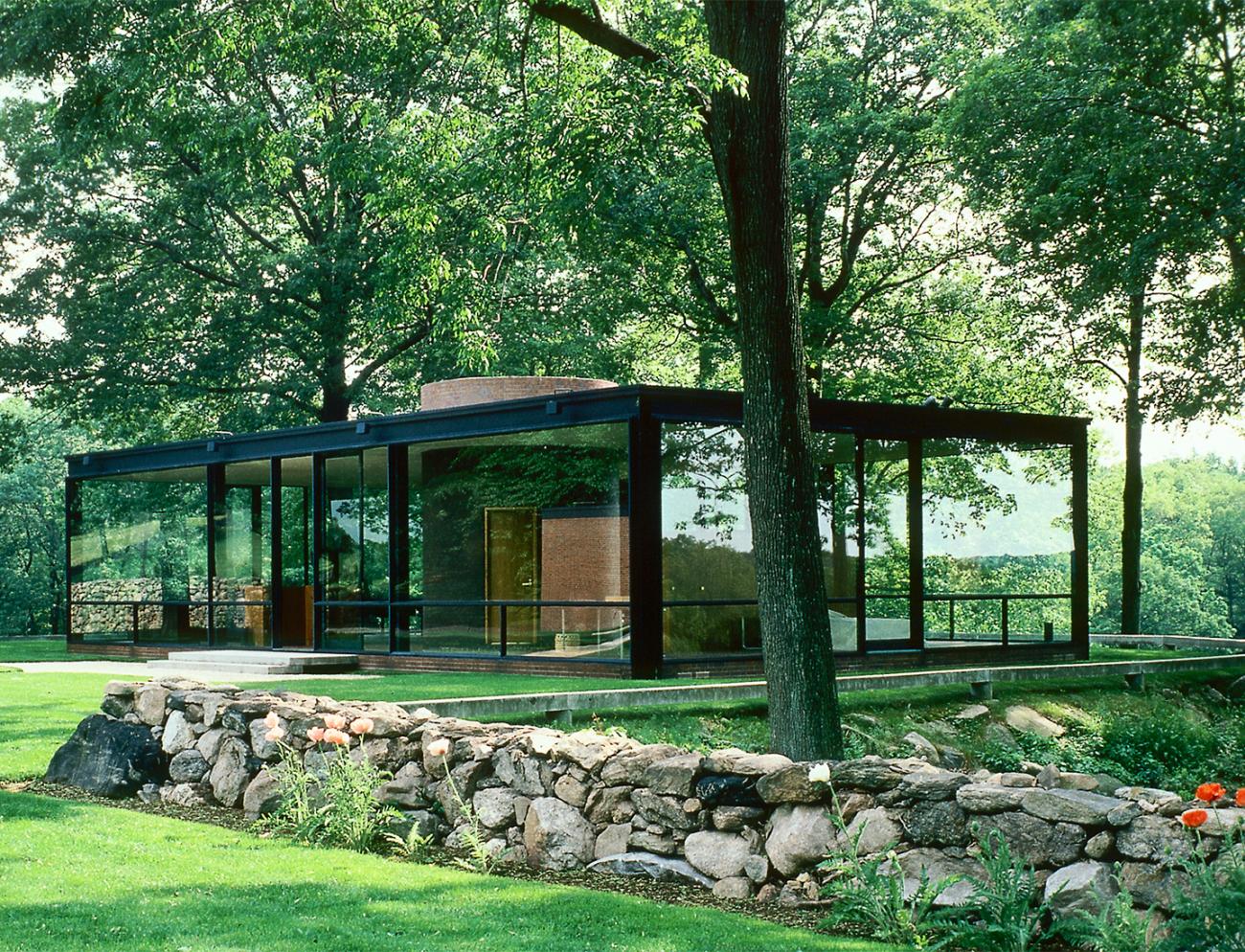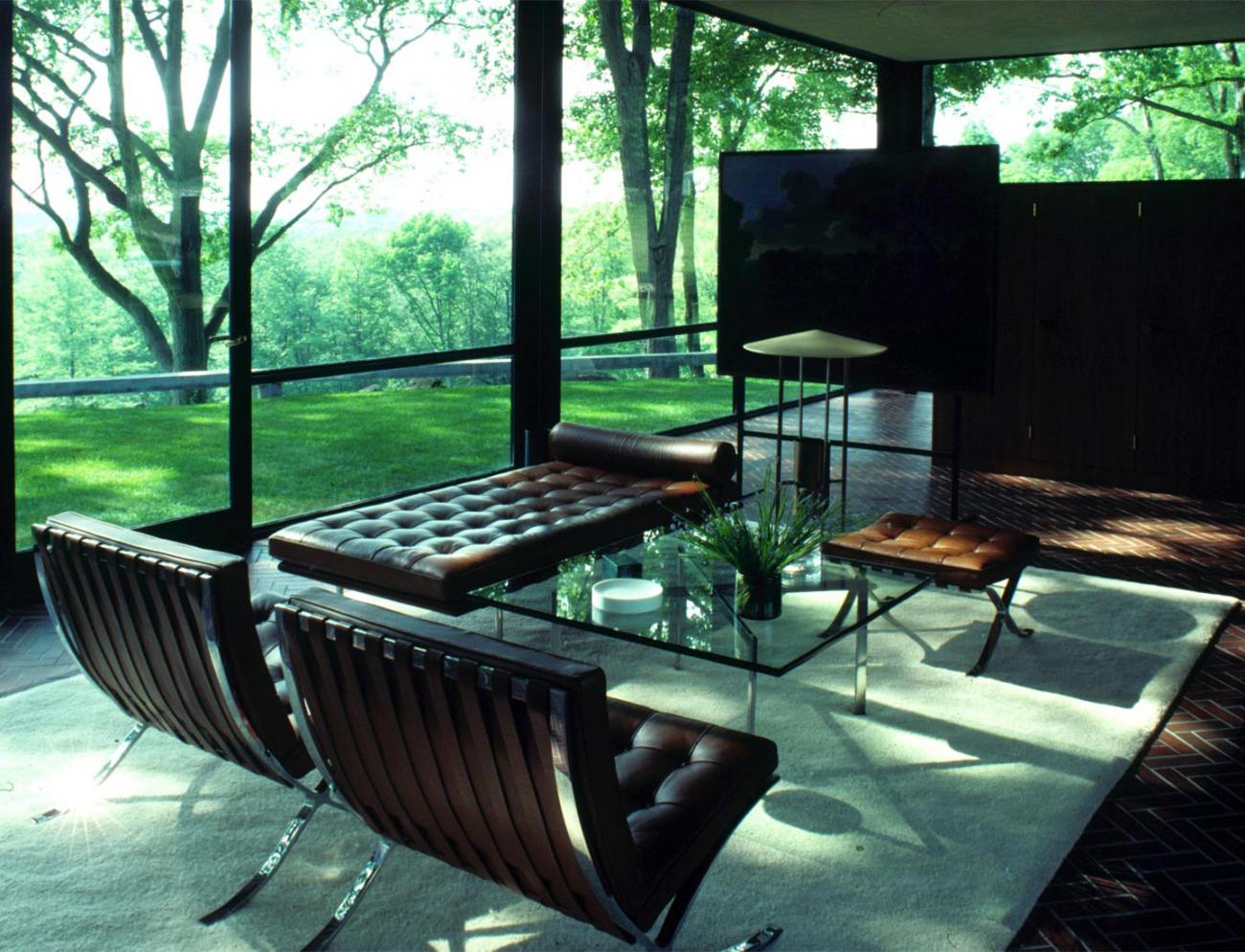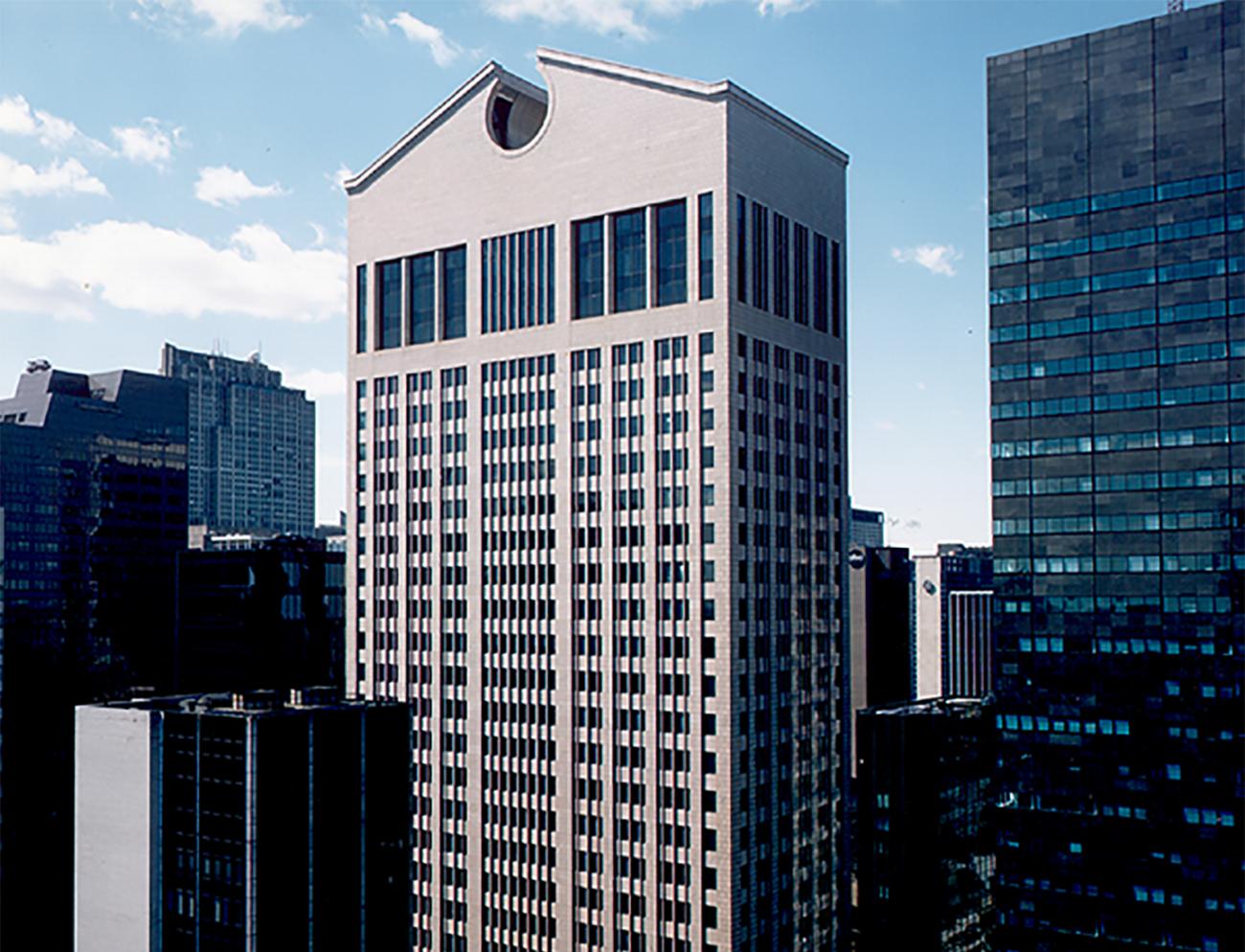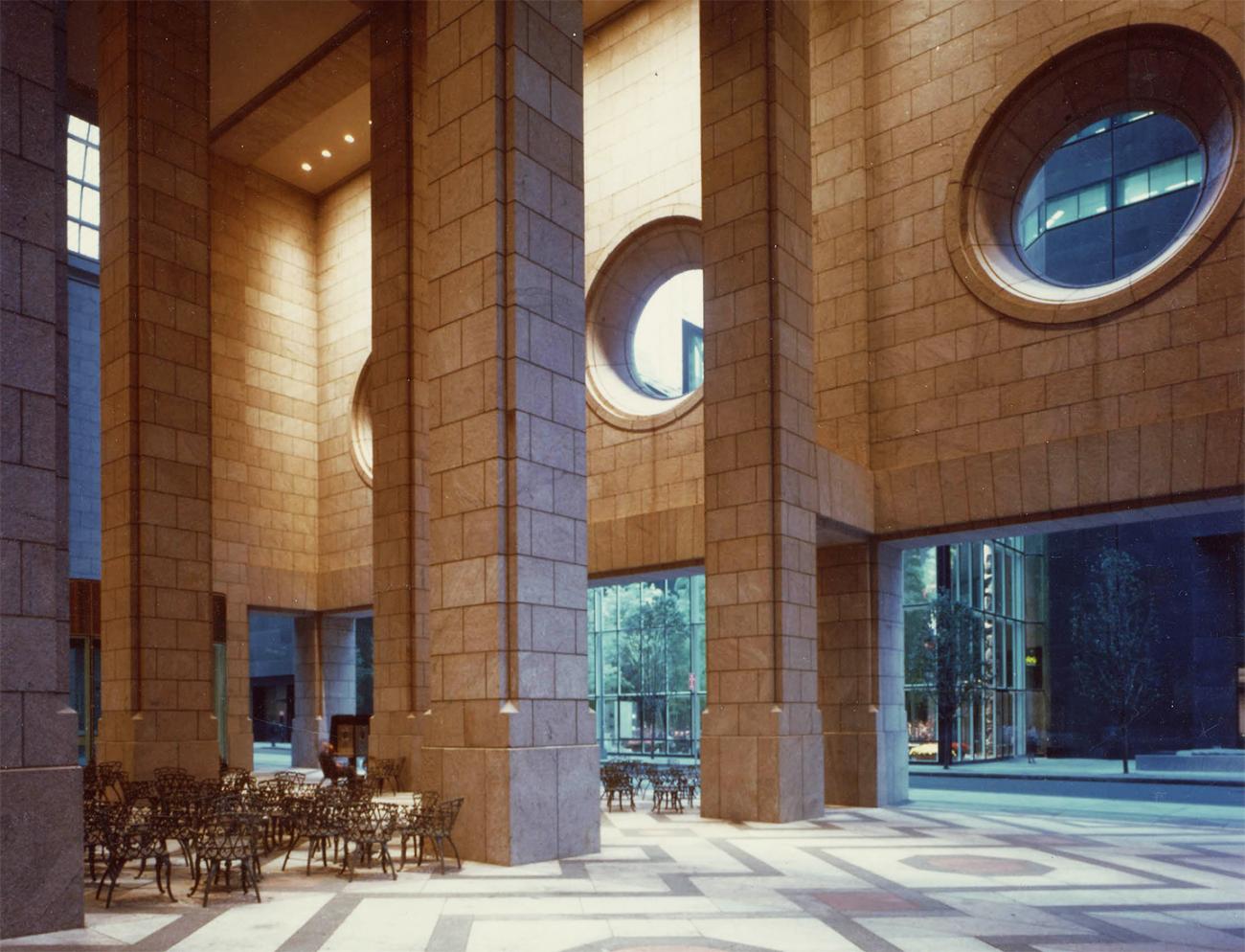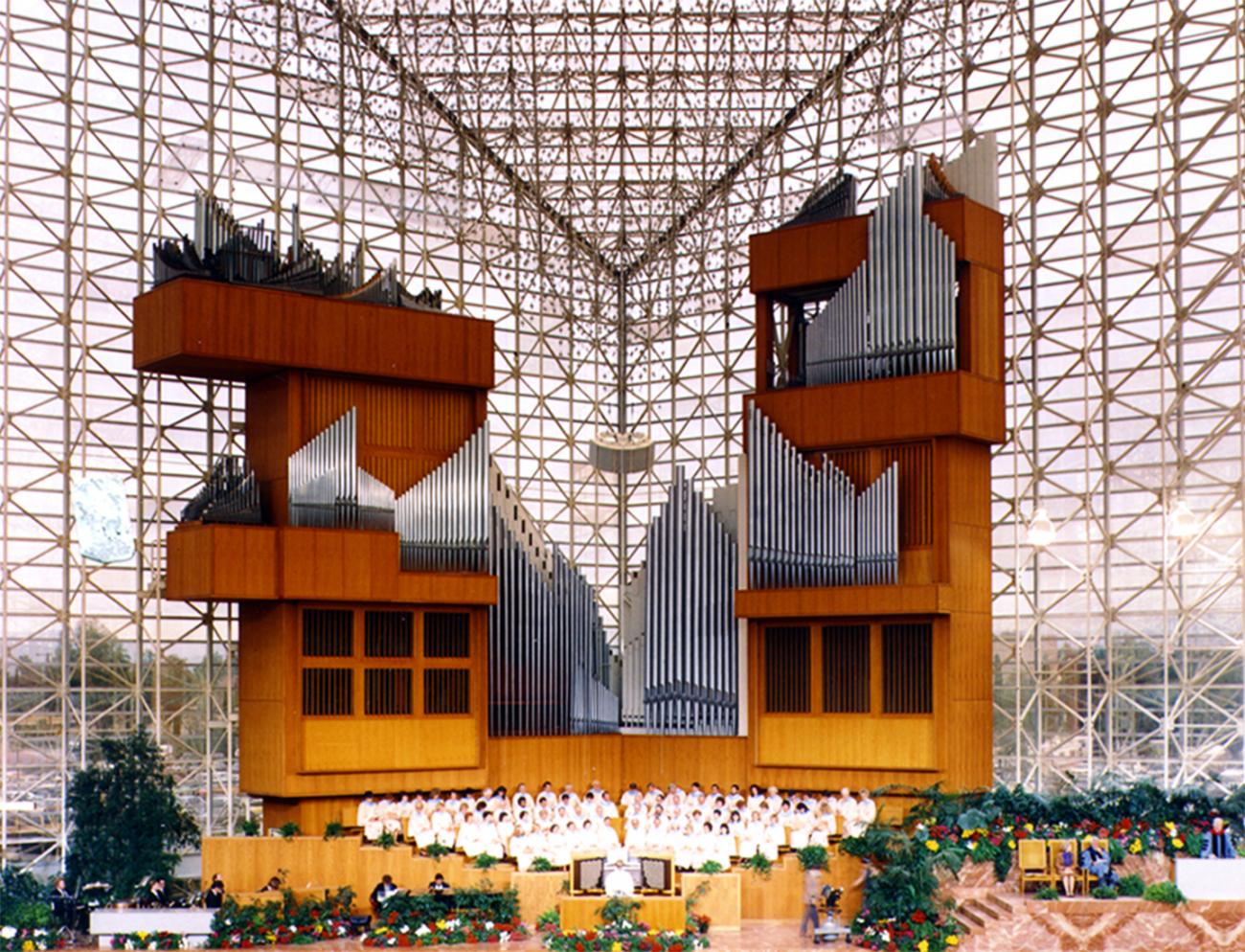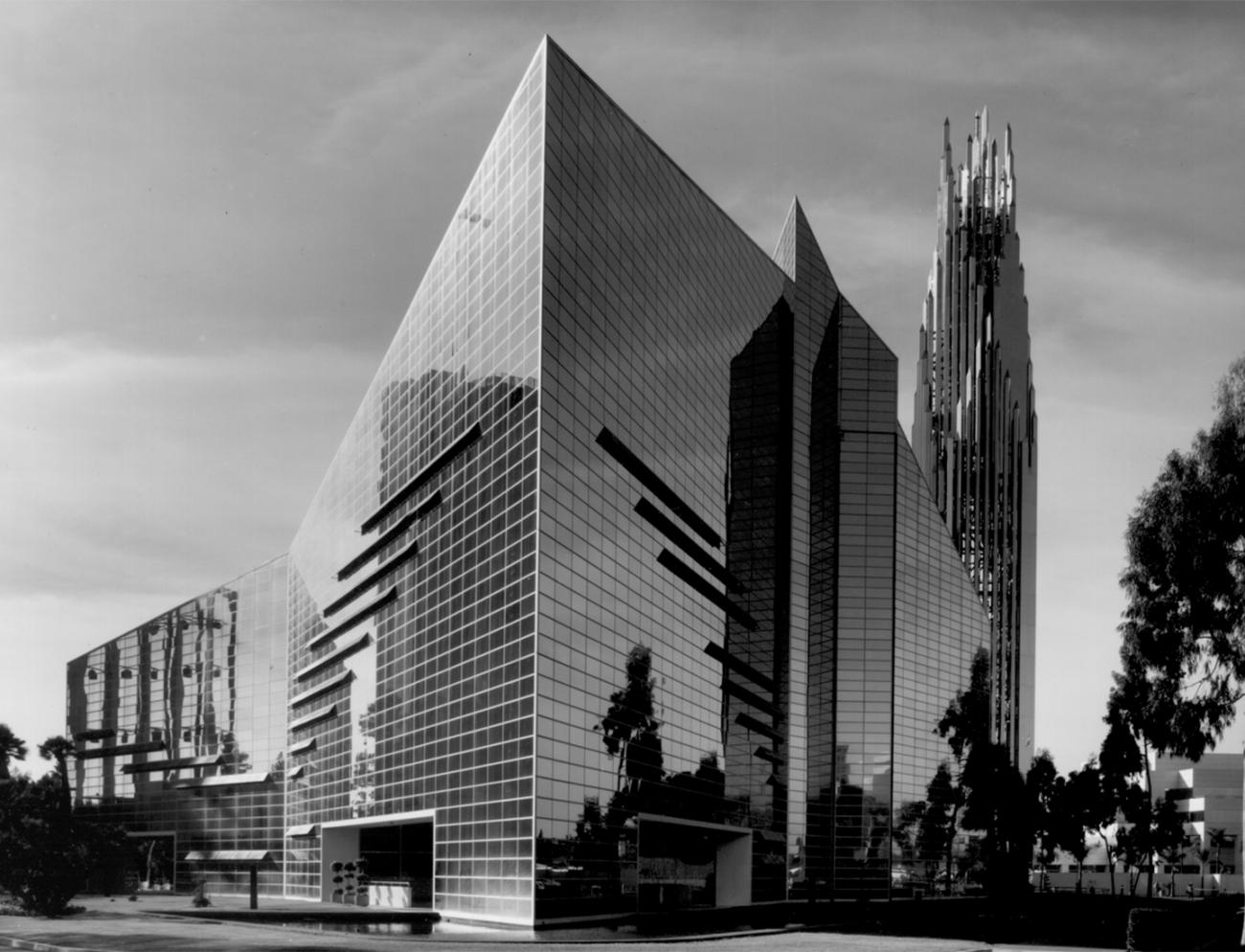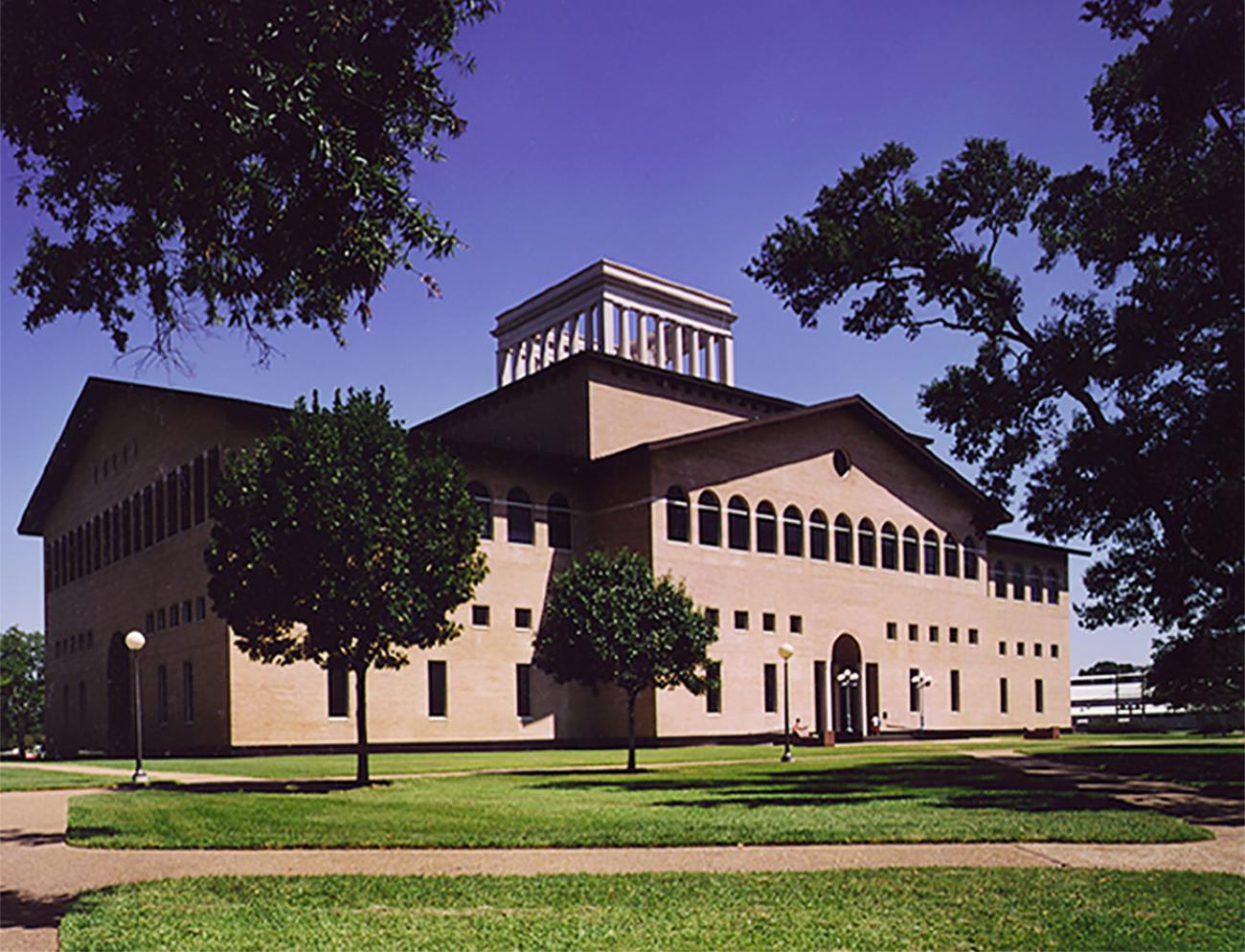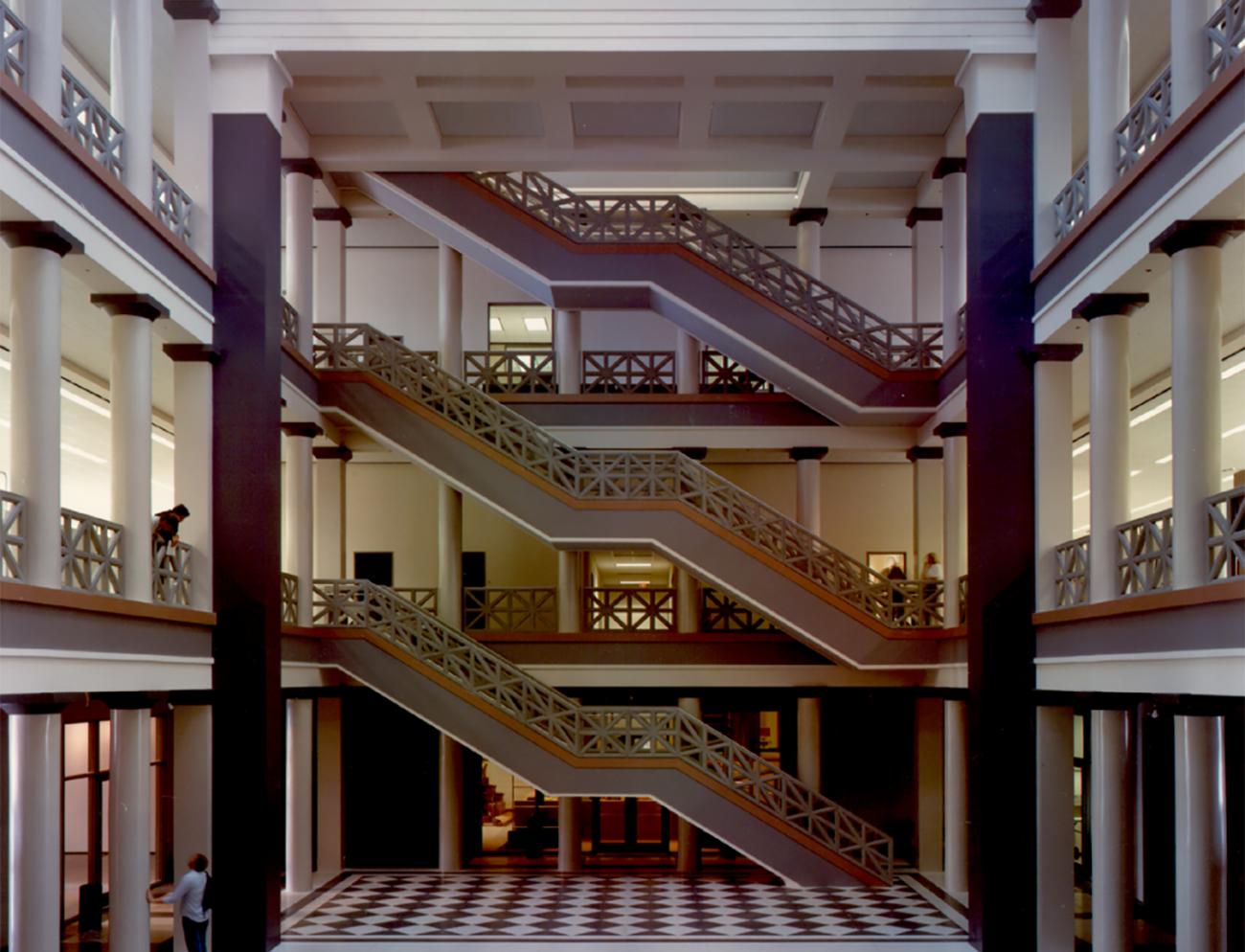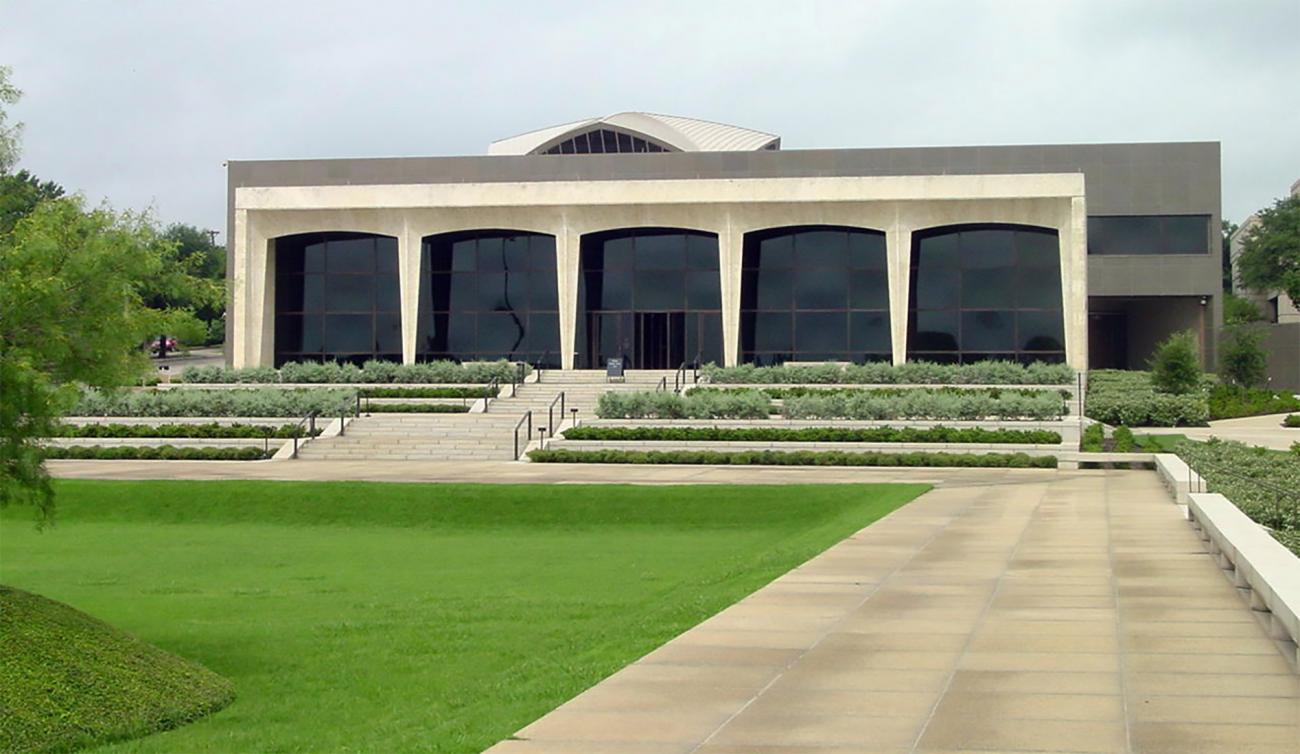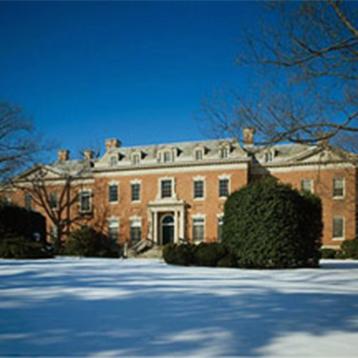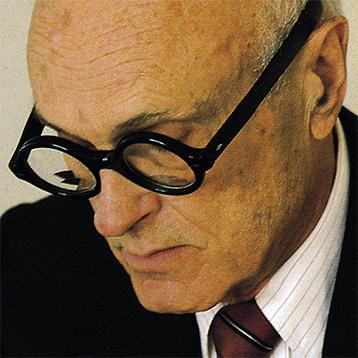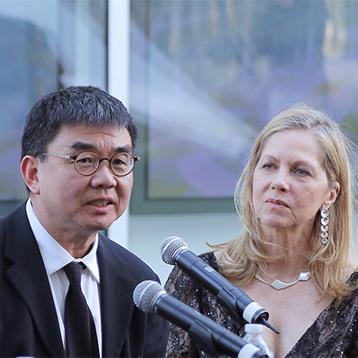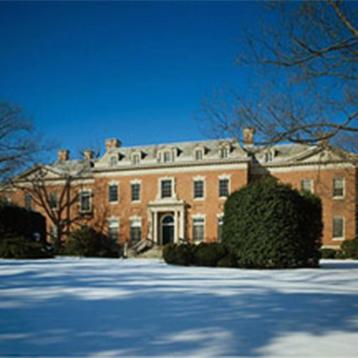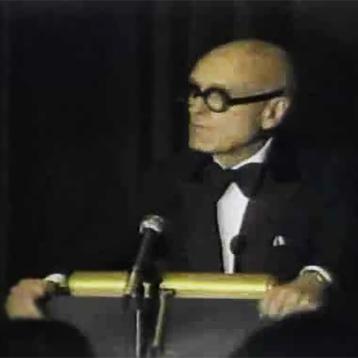Philip Johnson (1906-2005) was born in Cleveland, Ohio in 1906, and in the years since has become one of architecture's most potent forces. Before designing his first building at the age of 36, Johnson had been client, critic, author, historian, museum director, but not an architect.
In 1949, after a number of years as the Museum of Modern Art's first director of the Architecture Department, Johnson designed a residence for himself in New Canaan, Connecticut for his master degree thesis, the now famous Glass House.
He literally coined the term "International School of Architecture" for an exhibition at MOMA.
Johnson organized Mies van der Rohe's first visit to this country as well as Le Corbusier's. He even commissioned Mies to design his New York apartment. Later, he would collaborate with Mies on what has been described as this continent's finest high-rise building, the Seagram Building in New York.
By the fifties, Johnson was revising his earlier views, culminating with a building that proved to be one of the most controversial of his career—the AT&T headquarters in New York with its so-called "Chippendale" top.
